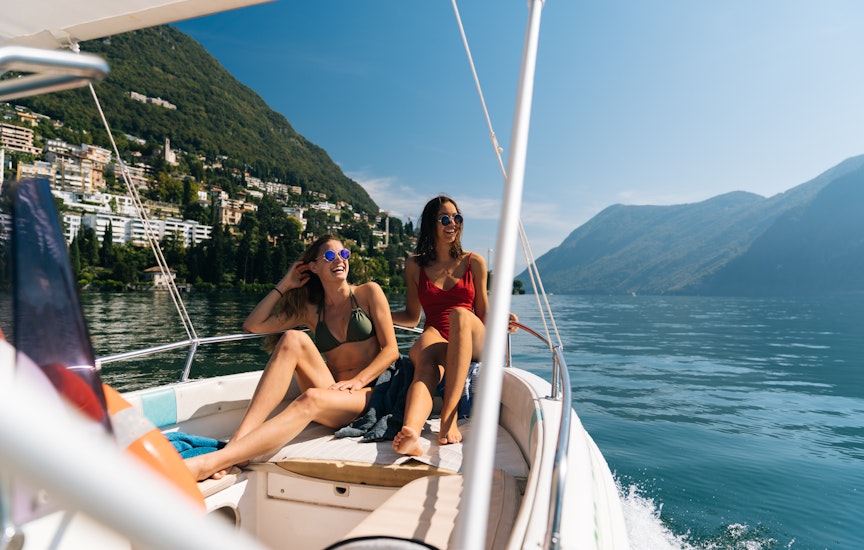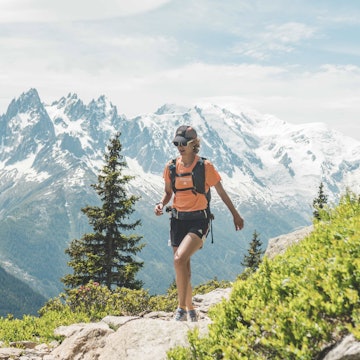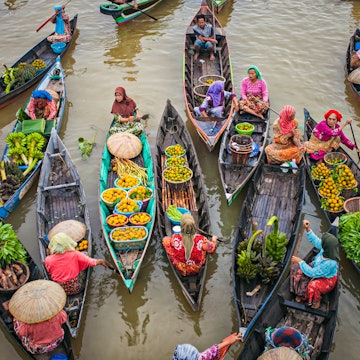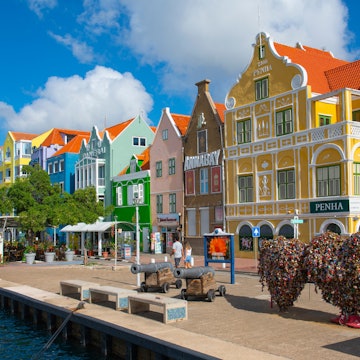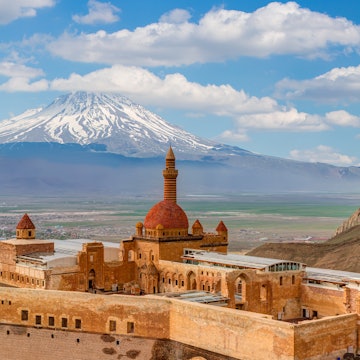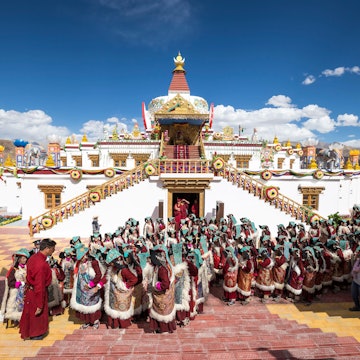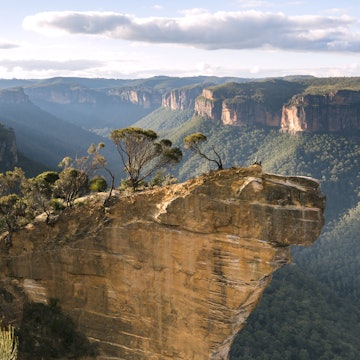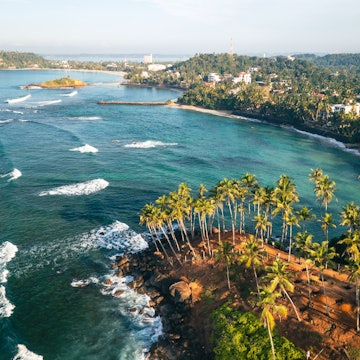
Escape the crowds of Lake Como and try Switzerland's Ticino instead

Oct 9, 2025 • 7 min read

Ticino can inspire the same feelings as Lake Como. Claudia Gori for Lonely Planet
Lake Como is undeniably one of the most glamorous places in Italy. Since Roman times, wealthy families have built palatial villas and elaborate gardens along its shores to attract the elite. Still today, you can sit and sip Apérol spritzes on the lawn at Villa d’Este and watch the glitterati arrive in polished vintage boats, framed by deep blue waters and alpine peaks. But Como is also officially facing overtourism and the logistical headaches that come with it.
To avoid the crowds, there is another surprisingly similar destination boasting not just one majestic alpine lake but two (Lake Lugano and Lake Maggiore), both reachable from each other by train in under an hour. It is the Swiss canton of Ticino, which is sandwiched between Italy on both sides of its border. Given its close proximity to Lombardy, you’ll find deeply authentic Italian culture and cuisine (saffron risotto, anyone?) blended with excellent regional wines, and some of the best hiking in all of Switzerland. In short, Ticino blends Swiss efficiency with Italian charm so beautifully, it’s like two countries for the price of one.




Why visit Ticino now?
The region’s under-the-radar status makes large swaths of it relatively more affordable and less crowded. But that won’t last long. Behind the scenes, a company called The Living Circle is connecting local Swiss farms (and their award-winning produce) to a growing network of slow-food star hotels and restaurants, which include the legendary Castello del Sole in Ascona. Just across from it, overlooking Lake Maggiore, a chic new cabin-style mountain retreat for alpine hikers and hard-core cyclists called Habitat has made its debut. And a bit further south, in the village of Morcote, a pair of female winemakers are busy harvesting the wine world’s best-kept secret (more on this later). But to my mind, the most exciting event in Ticino is and will always be its October chestnut festivals, which have been a Swiss-Italian culinary tradition for centuries. Yes, my epicurean friends, fire-roasted chestnuts are a reason to travel.
Ticino’s best experiences
Eat for free at the chestnut festivals
No one does chestnuts better than the Swiss-Italians, who come together every year in October to host chestnut festivals known as “Castagnatas.” Picture a long line of maronatts, flat-capped grandads roasting chestnuts, on a cobblestone street waving smoke away from roasting pans brimming with the season’s harvest. Meanwhile, locals and tourists clamor for their free bagfuls in one of four official languages: German, French, Italian and Romansh. Andrea Bocelli’s "Bésame Mucho" echoes out of cafés as people stroll by eating gelato cones arm in arm. To see this play out along the picturesque promenade of Ascona on the lake is to be in a time capsule, a scene easily stolen from the 19th century or earlier. You can breathe in the atmosphere of Ticino as it once was, and taste the sweet sustenance that sustained Alpine communities through harsh winters in a region where grains did not grow. Even today, the Ticinese call chestnuts the “bread of the poor.”
Ferry to the Brissago Islands
If you’re entertained by historic tales of innuendo and intrigue, followed by a languorous lunch of tender pork cheeks and polenta, you absolutely must visit Isole di Brissago, a pair of small islands in the middle of Lake Maggiore. It’s very easy to get there via the lake’s robust network of ferries. I hopped on from Ascona and discovered a spectacular neoclassical villa amid a protected botanical garden with over 2000 plant species. Bought in 1927 by a wealthy merchant from Hamburg named Max Emden, Villa Emden became infamous in Switzerland for hosting flamboyant parties, nude bathing included. To make the most of your visit, pre-book a lunch table at Restaurant Villa Emden (but maybe keep your clothes on).

Get on, and in, the water
For that "Eat your heart out, Como" feeling, you’re going to want to cruise around Lake Maggiore on a polished Riva boat in your biggest, darkest sunglasses and silk scarf. Luckily, most hotels offer a boat shuttle service for guests. In Ascona, Hotel Eden Roc offers a Riva Aquarama classic boat for rent with a skipper, or you can arrive at the Castello del Sole resort, mentioned below, in similar fashion for Chf30. Otherwise, all along the Lake Maggiore riviera, life’s a beach. So, you’ll want to dedicate at least one afternoon to getting your toes in the sand. The Lido Ascona is one of the most beautiful beaches in Ticino and is very easy to reach once you are in Ascona; you can walk directly from the promenade of Ascona or from the main bus stop. And I can tell you with a straight face that there’s almost nothing better in life than hopping off a red-eye flight, stripping off your rumpled airplane clothes and diving into the crystal clear waters of Lago Maggiore, with only the snow-capped Alpine peaks to bear witness.
Eat pastries in Lugano’s historic café
Lugano, Ticino’s biggest lakeside city, is equal parts financial hub, cultural destination and resort town. It’s a very easy place to explore on foot, so make a point of strolling to the Grand Café Al Porto for pastries, coffee and nocino (a caramel-colored walnut liqueur that will change your life). Since 1803, it has hosted political dignitaries, celebrities like Clark Gable, Sophia Loren and Carlo Ponti – and Italian exiles. It's said that in 1945, a secret high-level meeting was held between German and Allied officials here, and their negotiations helped lead to the surrender of German forces in Italy that spring. Today, you can still walk inside this room and see the rich wooden ceiling from the 16th century, imagining what took place beneath the magnificent frescoes by painter Carlo Bonafedi.
Sip award-winning wines in an ancient castle
Tenuta Castello di Morcote is a breathtakingly beautiful family-owned wine estate and 15th-century castle, set out on a promontory overlooking Lake Lugano. If you walk to the cliff edge, surrounded by terraced vineyards, olive trees and 100-year-old oaks, the border of Italy presents itself before you. Inside the castle, a medieval military fortress built around 1450, you’ll find a magical setting from which to try some of the best wines in Switzerland. The owners host tours, tastings and private events to showcase the varietals made by oenologists Benedetta Molteni and Kate Gannon. One sip of their award-winning white merlot, Castello di Morcote Bianco, and I wanted to buy an extra suitcase. (They don’t distribute in North America due to high tariffs. All the more reason to visit.) Owner Gaby Gianini and her family have made it easier to stay here by expanding the business to include a biodynamic farm, two restaurants and a nearby hotel called Relais Castello di Morcote.

Where to stay in Ticino
The three must-see towns in Ticino, each offering windows into their own unique worlds, are Lugano, Ascona and Morcote.
If this is your first trip, start in the biggest city, Lugano, for a soft landing with all the conveniences of a major cosmopolitan city. For a budget-conscious stay, Airbnb is an established (and growing) part of Lugano’s short-term rental market. But if you’re looking to splash out, the Hotel Splendide Royal Lugano is a posh place to stay, according to tour guide Stefania Gitti, who offers architectural tours and speaks Italian, French and English.
In picturesque Ascona, where the chestnut festivals take place, you’ll find Castello Del Sole, which boasts its own home winery and agricultural estate that supplies its restaurants with some of the best polenta, risotto and pasta in the region. History echoes from every hand-carved door and brass knob.
On the very southern tip of the canton is Morcote. With a postage-stamp population of about 700, it is a very approachable yet exquisite place to experience a slice of real Swiss-Italian life. On the east side of the village, you’ll find a very different style of stay in the monastery-turned-hotel-and-restaurant Relais Castello di Morcote. The vibe is serene, contemplative and slow – the kind of place where you can hear the clink of heavy iron keys and church bells chiming out over the lake from your private balcony.

How to pair a visit to Como with a visit to Lugano
If you’re traveling throughout Switzerland, the Swiss Travel Pass is your best friend. Prices might seem steep (starting from about US$300), but it includes unlimited train, bus and boat travel, public transportation in more than 90 cities and towns and free admission to more than 500 museums throughout the country. Download the pass on your smartphone, and you’re good to go. From Como to Lugano, the fastest, most affordable and scenic way to travel is on SBB, the Swiss Federal Railways. Cross over bridges, through tunnels and past the stunning Alps.





